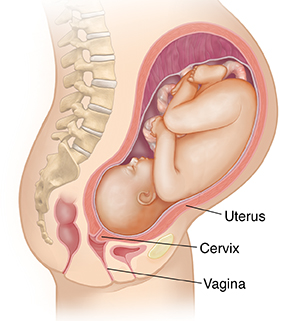Labor has 3 stages. Your healthcare provider may talk about the progress of your labor with certain words. One of these is your baby’s position. Another is your baby’s station. And the effacement and dilation of your cervix will be noted. Read below to learn about these terms and the 3 stages of labor.
Your baby moves into position
Position is your baby’s placement in your uterus. Your baby may be facing left or right. They may be headfirst or feetfirst. Station refers to how far your baby has moved down into your pelvic cavity.
First stage of labor
During the first stage of labor, contractions of the uterus help your cervix thin (efface). They also help it widen (dilate). This will help your baby pass through the vagina (birth canal). At first your contractions won't come that often or last that long. But as time passes, they will come more often, they may be more painful, and they will last longer. They will last about
Second stage of labor
When your cervix is fully dilated, the second stage of labor begins. In this stage, you will have stronger contractions of your uterus that will help your baby move down the birth canal. They may happen every
Third stage of labor
The third stage of labor comes after your baby is born. This is when the afterbirth (placenta) comes out of your uterus. Your uterus will continue to contract. But the contractions are much milder than before.


